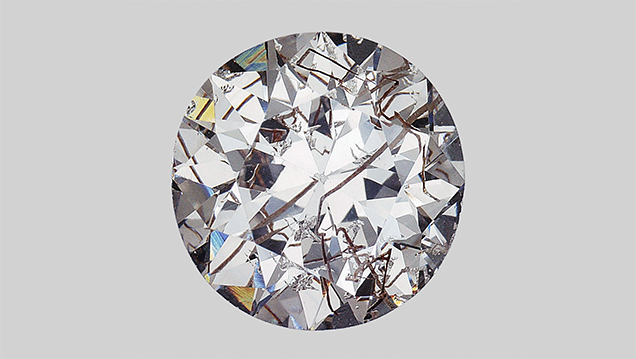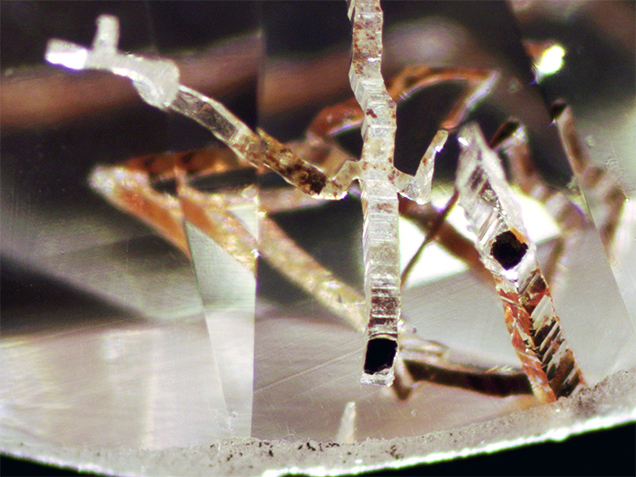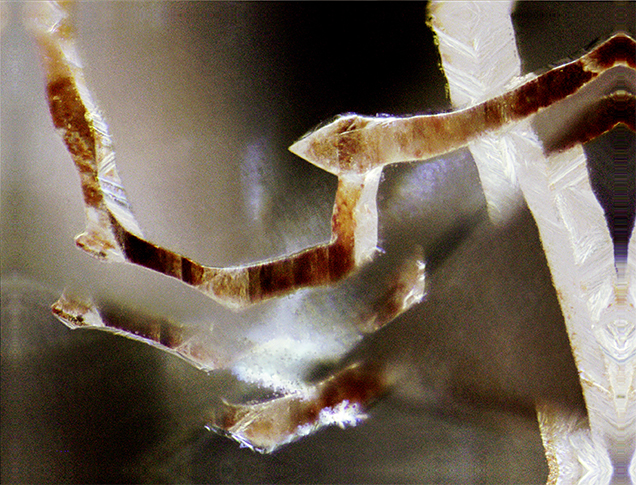Type IIa Diamond with Extraordinary Etch Channels

Etch channels are rare inclusions in natural diamonds, both type I and type II (see T. Lu et al., “Observation of etch channels in several natural diamonds,” Diamond and Related Materials, Vol. 10, No. 1, 2001, pp. 68–75). Recently, the Laboratoire Français de Gemmologie received a 1.77 ct round brilliant-cut diamond containing numerous large etch channels, a feature appreciated by inclusion collectors. The gem had K color and I1 clarity due to the etch channels and their reflectors (figure 1). Infrared absorption spectroscopy revealed a type IIa diamond.


Dissolution etch channels in diamond are rare but can have various forms (M. Philippe and E. Fritsch, “Dissolved dislocation: Inclusions not always easy to identify, part I,” Revue de Gemmologie, Vol. 200, 2017, pp. 11–22, in French). They are due to the dissolution of dislocations inside the crystal. These dislocations might be growth dislocations or caused by later deformation. One type of etch channel in diamond consists of regular and parallel lines related to diamond’s crystallographic structure. The other type, the kind exhibited in this diamond, is a worm-like ribbon due to crystallographic defects. All dissolution etch channels have rhombic openings at the surface of the diamond (figure 2); a few have a pyramidal termination and restart in another direction (figure 3). This is a rare occurrence and confirms that dissolution can be stopped—or slowed—by defects in the crystal structure. In addition, the dissolution can start in an easier direction, such as a dislocation.
Etch channels are rarely observed in cut gem diamonds. But when gemologists observe a specimen like this one, it is always a pleasure for the eyes and a curiosity of nature.



